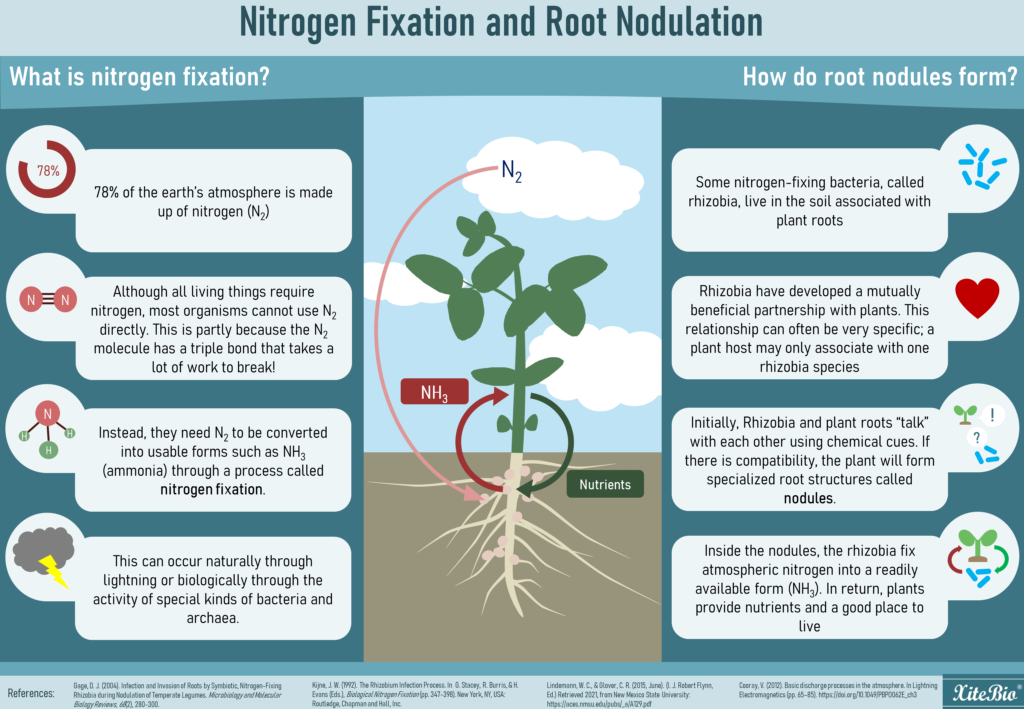Nitrogen (N) is the nutrient most heavily used by legumes. It is important that the plants have a readily available supply if they are to reach their yield potential. Soils on their own will rarely have N levels high enough to meet crop demands. So how do you ensure that your crops are getting enough N? In this week’s edition of Growing Possibilities, we will look at two common ways you can add N to your soils: fertilizer application and N-fixing bacteria.
The more common way to apply N is through fertilizer application. Fertilizer application allows you to supply the soil with the N levels needed for a productive crop. However, the application method can result in N being lost to the environment through leaching or denitrification. Plants also spend energy taking in the nutrient through the roots, and then to convert it into the proper form required for growth and development (1).
The other common way to add N to your soil is through N-fixing bacteria. Our air is made up of 78% N, yet the plants have no way to obtain it on their own (2). Some plants (most commonly legumes) have developed a relationship with specific soil bacteria called rhizobia. The plant and rhizobia work together to form nodules on the plant roots. These nodules house the rhizobia and provide it with carbon and nutrients from the plant. The rhizobia then take N directly from the air and supply it to the plant in a form it can use, giving it access to an abundant source of N. Plus, since nodules are a part of the plant, nitrogen is self-contained within the plant and less vulnerable to environmental loss. This relationship is highly specific, with certain species of bacteria forming this relationship with a specific species of host plant. In soybeans, for example, this bacterium is Bradyrhizobium japonicum, with other legumes forming nodules with different bacterial species (3).
The easiest way to add N-fixing bacteria to your soil is by inoculating your seed. By applying the rhizobia directly to the seed, you are ensuring that the rhizobia are close to the roots so they can form nodules when the plant needs them (4). A well nodulated legume crop has a multitude of benefits, and not just on this year’s crop. Legume crops leave a portion of the N they fix in the soil when they are harvested, enriching your field’s succeeding crop with an N boost right from the start. XiteBio’s premium liquid inoculants (XiteBio® SoyRhizo® for Soybeans and XiteBio® PulseRhizo® for Peas, Lentils & Faba beans) are formulated with our unique rhizobia to provide optimal nodulation and the highest N-fixation your plant can achieve. With this year’s sky-rocketing fertilizer price and fertilizer supply issues, N-fixing inoculants like XiteBio SoyRhizo and XiteBio PulseRhizo could be the complimentary option you are looking for.
References
- https://www.intechopen.com/chapters/67454
- https://sciencing.com/percentage-nitrogen-air-5704002.html
- https://www.nature.com/scitable/knowledge/library/biological-nitrogen-fixation-23570419/
- https://www.croplife.com/crop-inputs/seed-biotech/understanding-inoculation-techniques-for-legumes/


